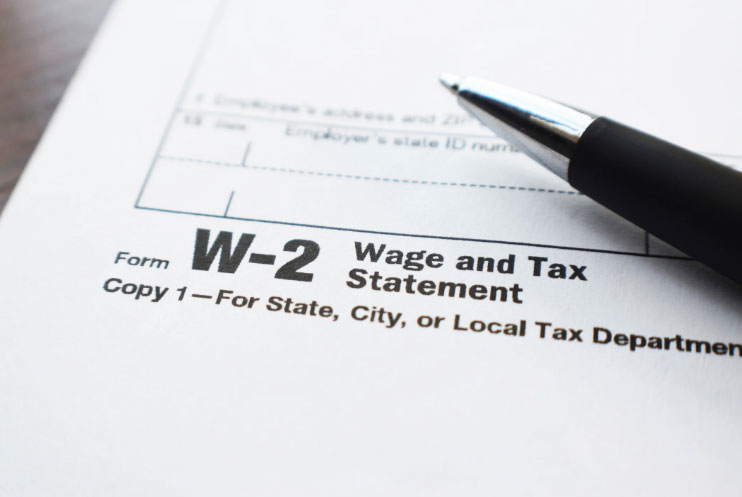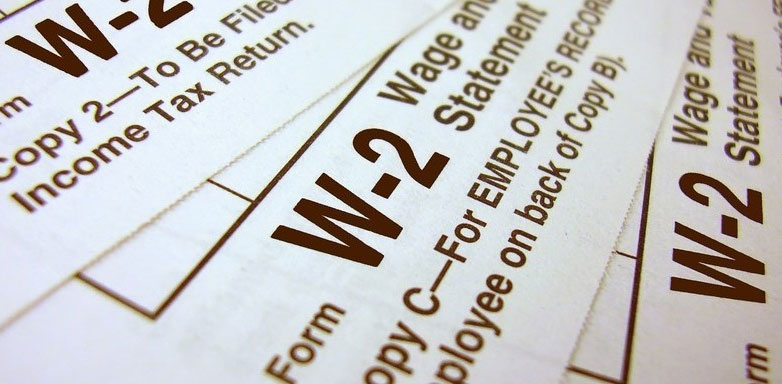Form W-2, the IRS's official pay and tax form, is what employers are required to submit to the agency. There are additional vital facts on your W-2 that include the amount of taxes withdrawn from your paycheck and other employer-sponsored benefits like health insurance or adoption and dependent care aid or contributions to a health savings account.
When it comes to filing your tax return, the W-2 information provided by your employer is critical. Your company should send you a W-2 form if you worked as an employee in a given year, and it should arrive in your mailbox around January 1. If your company deducted any taxes from your income, you'd receive a W-2.
Who Uses a Form W-2?

You must send W-2 forms to all employees who have received a salary, wage, or another kind of remuneration from their employer under federal law. Contract workers, who use various tax forms, are not included here. Each year, the employer must provide the W-2 form to the employee by the deadline of January 31 to give the employee enough time to file their taxes.
Employers also require W-2 forms for the year-round reporting of FICA taxes paid by their employees. Form W-2 and Form W-3 must be filed with the Social Security Administration by January for each employee (SSA).
The Social Security Administration (SSA) utilizes the information on these forms to calculate each worker's Social Security payments. The prior year's tax returns have been submitted. A W-2 form issued in January 2022 shows your income from the previous year.
How to File Form W-2?

Your employer will provide an annual W-2 tax form will be provided to you by your employer if you work for that business and are covered by the company's W-2 program. The IRS will get a copy of your W-2 from your employer.
To keep track of your paycheck, tax withholding and perks like 401(k) pre-tax contributions, you must fill out Form W-4 (or occasionally Form W-9) when you first start working for a firm. An employee's number of allowances, marital status, dependents, and other considerations are considered when the employer fills out the W-4 form.
To complete your tax return, you'll need to manually or electronically enter your W-2 into Form 1040. You may input your W-2 data straight from your payroll source using online tax preparation software in many circumstances.
How to Get Your W-2 Form?
Your employer must furnish you with copies of your W-2 if you are entitled to one. This form is normally due by the end of January or the beginning of February after the previous tax year. W-2s can be mailed or made available electronically, either by the employer or their payroll provider, either directly or through the mail.
When Will you Receive your W-2?
According to the IRS, employees and the government must get W-2s by January 31 or risk fines. By the end of the first week of February, you should have received your tax return from the IRS. W-2s can also be sent electronically by employers, although this isn't needed.
As a result, it's possible that you can order one online. Your ex-employer can wait until January 31 to provide you with a W-2, even if you left your employment months ago. If you ask for it earlier, the employer has 30 days to deliver it.
What is the difference between W-4 and W-2?
Even though they share a name, a W-4 form and a W-2 form are vastly different documents. Firstly, each form is prepared by a different person. If you're an employee, you'll need to complete and submit a W-4 form to your company. The IRS and the Social Security Administration get a W-2 from your company at the end of the year.
It also notifies your employer how much tax to deduct from your check. The W-2 is a summary of your taxable income and the amount of tax deducted from it by your employer throughout the tax year.
Annually, you should verify your tax withholding to make sure you're deducting the right amount. You can utilize the W-4 form to adjust your withholding if you receive a significant return each year and would want a larger payout each pay period.
A fresh W-4 can also be sent to your employer so that they can withhold more from each paycheck if you miscalculated your tax and owe money to the IRS. You won't have to pay the IRS each year if you do this. Use TurboTax's W-4 withholding calculator to figure out how much you'll be required to withhold.








